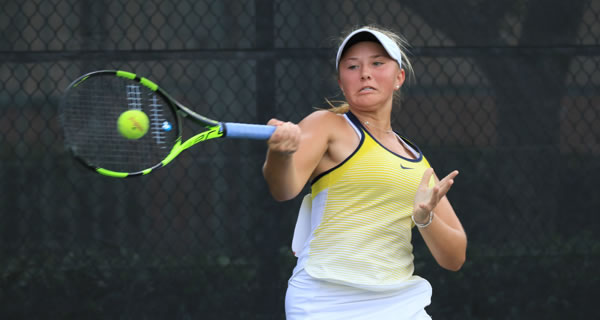UTRs are purely result-based and are calculated using a player's last 30 eligible match scores from within the last 12 months. For each eligible match, the algorithm calculates a match rating and a match weight and a player’s UTR is the weighted average of all the match ratings. Please note that more than 30 matches may be used in cases where the 30th match happens to fall within a tournament with additional matches. In this scenario all matches from the tournament are counted and consequently they are all taken off at the same time as well.
Calculating Match Rating
Match ratings are calculated by taking into account the UTR difference between the opponents and the percentage of games won by each player. Given the UTR difference, the algorithm expects a certain percentage of total games won. The player who performs better than the algorithm’s expectation will see their match rating go up while the other player’s match rating will go down by the same amount. For example, if your opponent's rating is exactly the same as yours then the system expects you to win exactly the same number of games as your opponent. But if you end up winning more games than them then that will help your match rating. Similarly, if your opponent is X levels below you and the system expects you to win 6-2, 6-2 and you end up winning 6-1, 6-1 then that would help your match rating as well. The same scale applies to playing against a higher-rated opponent. So if the system expects you to lose 6-3, 6-3 but you lose 6-4. 6-4 instead then that will boost your match rating as well. In all these cases, how much your match rating goes up will depend on how far above expectation your total game count in the match was. Similarly, doing worse than expected in these matches will hurt your match rating.
Calculating Match Weight
The following factors are used in the match weight calculation:
Format – As the match format increases in length, more weight is given. A match with a three-set format receives more weight than a match with an eight-game pro set format.
Competitiveness – As the UTR difference between players increases, less weight is given. For example, imagine a player with a UTR of 6.00. A match played against an opponent with a UTR of 5.00 or 7.00 receives more weight than a match played against an opponent with a UTR of 4.00 or 8.00.
Reliability – As the reliability of the opponent’s UTR increases, more weight is given. A match played against an opponent who competes often and thus has a reliable UTR receives more weight.
Time Degradation – As prior matches get older, less weight is given. Since the algorithm is a representation of current form, it gives more credit to matches played within the last few months.







